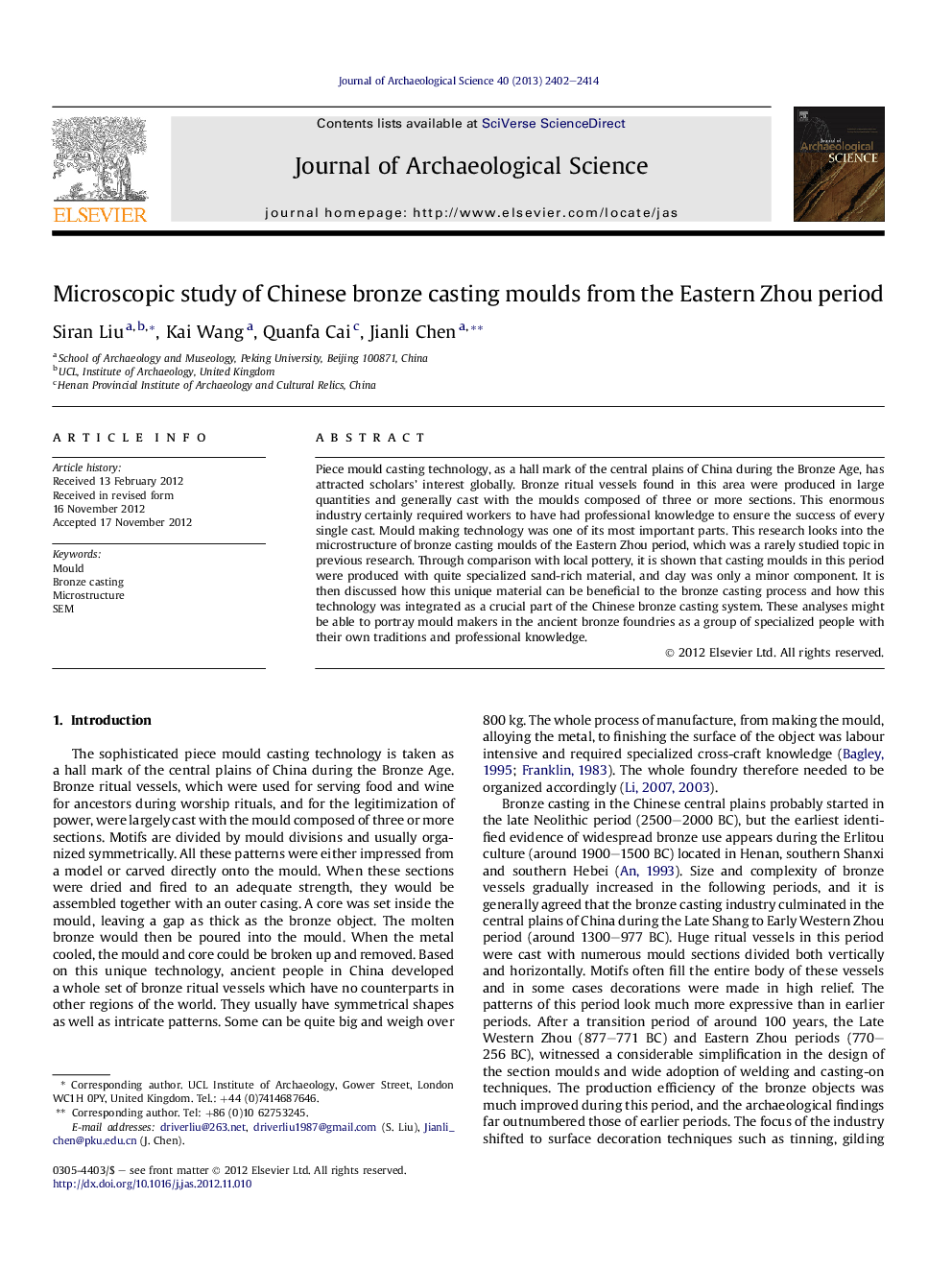| Article ID | Journal | Published Year | Pages | File Type |
|---|---|---|---|---|
| 1035555 | Journal of Archaeological Science | 2013 | 13 Pages |
Piece mould casting technology, as a hall mark of the central plains of China during the Bronze Age, has attracted scholars' interest globally. Bronze ritual vessels found in this area were produced in large quantities and generally cast with the moulds composed of three or more sections. This enormous industry certainly required workers to have had professional knowledge to ensure the success of every single cast. Mould making technology was one of its most important parts. This research looks into the microstructure of bronze casting moulds of the Eastern Zhou period, which was a rarely studied topic in previous research. Through comparison with local pottery, it is shown that casting moulds in this period were produced with quite specialized sand-rich material, and clay was only a minor component. It is then discussed how this unique material can be beneficial to the bronze casting process and how this technology was integrated as a crucial part of the Chinese bronze casting system. These analyses might be able to portray mould makers in the ancient bronze foundries as a group of specialized people with their own traditions and professional knowledge.
► New study on the microstructure of Chinese bronze casting moulds. ► Unique mould making material which is quite different from that of domestic pottery. ► New information about firing temperature of moulds revealed by SEM images. ► New light on the discussion of co-craft collaboration in Chinese bronze industry.
